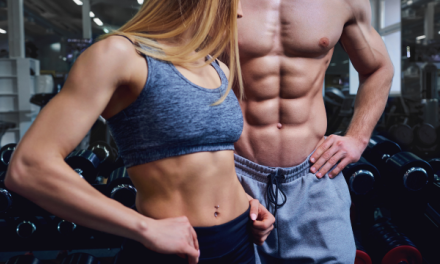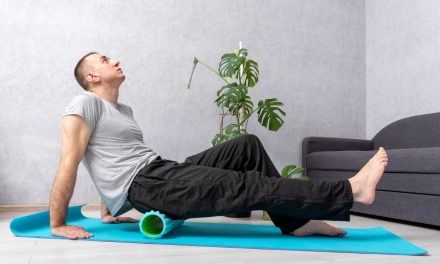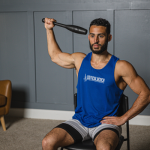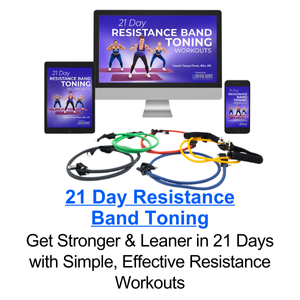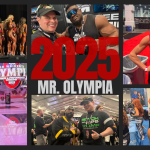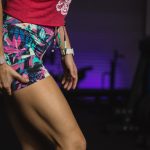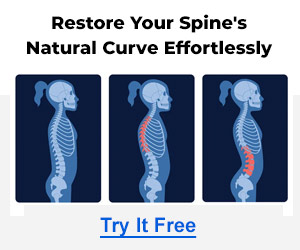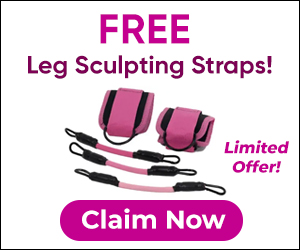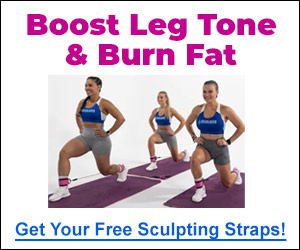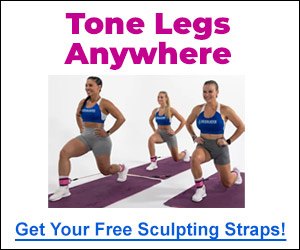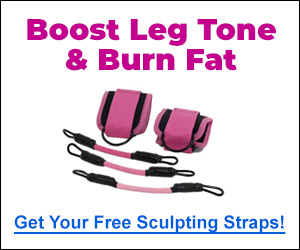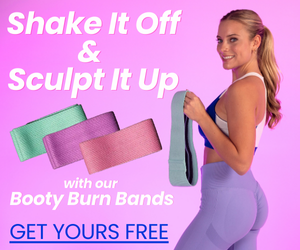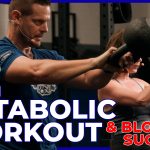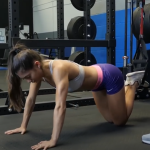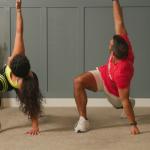Are you putting in the effort to sculpt your legs but not seeing the results you hoped for?
Common mistakes could be sabotaging your progress, turning your hard work into frustration.
From improper form to neglecting crucial muscle groups, these errors can hinder your leg sculpting efforts and even lead to injury.
In this post, we’ll uncover the most common mistakes people make when trying to sculpt their legs and provide you with practical tips to avoid them.
Whether you’re a fitness newbie or a seasoned gym-goer, understanding and correcting these mistakes will help you achieve the strong, defined legs you’ve been working towards.
Let’s dive in and ensure your leg sculpting routine is as effective and safe as possible!
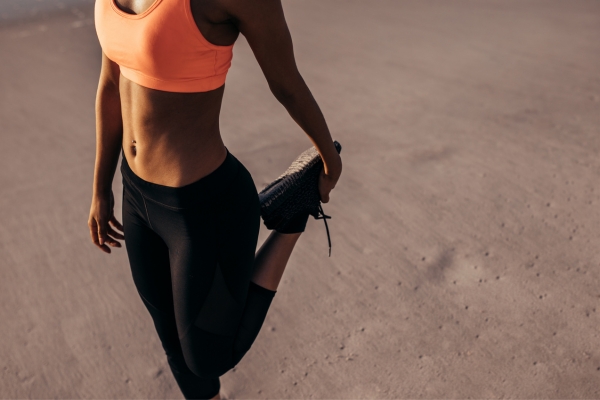
1. Skipping the Warm-Up
Warming up is a crucial step that prepares your body for the intense activity ahead.
It increases blood flow to your muscles, raises your body temperature, and improves your range of motion.
This sets the stage for optimal performance and reduces the risk of injuries.
Skipping the warm-up can lead to several negative consequences:
Increased Injury Risk: Cold muscles are more prone to strains and sprains.
Reduced Performance: Without a proper warm-up, your muscles and joints may feel stiff, limiting your strength and flexibility.
Slower Progress: Consistently skipping warm-ups can lead to more frequent injuries and longer recovery times, hindering your overall progress.
How to Properly Warm Up
A good warm-up should last about 5-10 minutes and include both dynamic stretches and light cardio. Here’s a simple routine to get you started:
Dynamic Stretches: Perform leg swings, walking lunges, and high knees to activate your muscles.
Light Cardio: Engage in activities like brisk walking, jogging, or jumping jacks to raise your heart rate and increase blood flow.
Specific Movements: Incorporate movements similar to those you’ll be doing in your workout, such as bodyweight squats or lunges, to further prepare your muscles and joints.
Taking the time to warm up properly ensures you start your workout strong and stay injury-free, making your leg sculpting efforts more effective.
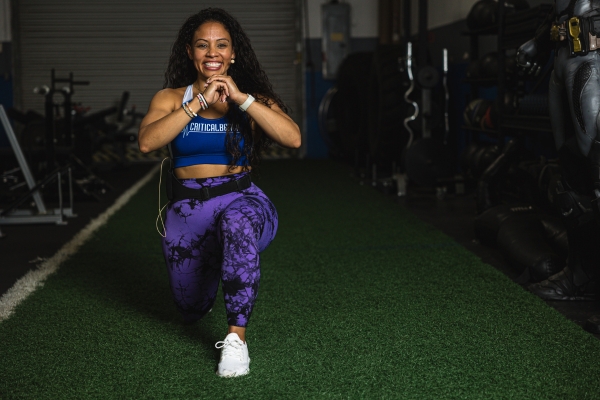
2. Not Using the Right Exercises
Incorporating a variety of exercises into your leg sculpting workout is crucial for comprehensive muscle development and avoiding plateaus.
Different exercises target different muscle groups and aspects of muscle function, such as strength, endurance, and flexibility.
Specificity in your exercises ensures that you are addressing all the major muscles in your legs, leading to balanced strength and better overall results.
Common Mistakes in Exercise Selection
A common mistake in leg sculpting routines is relying too much on machines.
While machines can be beneficial, they often limit the range of motion and don’t engage stabilizing muscles as effectively as free weights or bodyweight exercises.
Here are some other common mistakes:
Neglecting Compound Movements: Compound exercises like squats and deadlifts work multiple muscle groups simultaneously and should be a staple in your routine.
Overemphasis on Isolation Exercises: While isolation exercises have their place, relying solely on them can lead to imbalances and reduced overall strength.
Lack of Variety: Doing the same exercises repeatedly can lead to plateaus and decreased motivation. Mixing up your routine challenges your muscles in new ways and keeps your workouts interesting.
To ensure balanced muscle development and effective leg sculpting, incorporate a mix of compound and isolation exercises.
Check out our complete list of the best leg sculpting exercises and workouts.
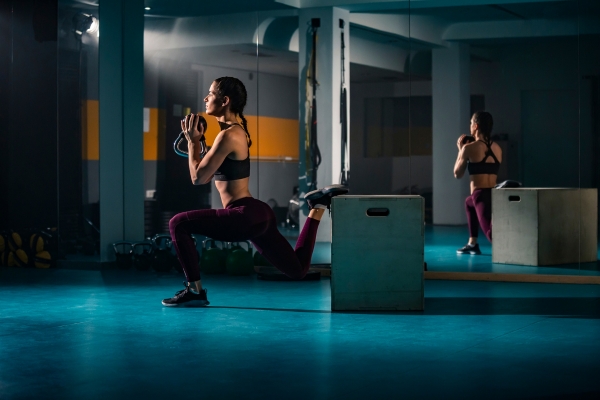
3. Poor Form and Technique
Maintaining proper form is essential for effective leg sculpting and injury prevention.
Poor form not only diminishes the effectiveness of your workouts but also significantly increases the risk of injury. Here are some specific impacts:
Inefficient Muscle Activation: Incorrect form can lead to underdeveloped muscles as you’re not targeting the intended muscle groups effectively.
Increased Injury Risk: Poor technique places additional stress on joints and muscles, leading to strains, sprains, and other injuries.
Delayed Progress: Injuries and ineffective workouts mean longer recovery times and slower progress towards your fitness goals.
Tips for Maintaining Proper Form
Ensuring proper form and technique is critical for safe and effective workouts. Here are some tips to help you maintain proper form:
Start with Lighter Weights: Begin with a manageable weight to master the correct form before progressing to heavier loads.
Use Mirrors: Use gym mirrors to check your alignment and ensure you’re performing exercises correctly.
Engage Your Core: Keeping your core tight helps maintain stability and proper posture during exercises.
Watch Instructional Videos: Learn from reputable sources like the Critical Bench YouTube channel or hire a personal trainer to guide you and provide feedback on your form.
Focus on Controlled Movements: Perform exercises slowly and deliberately, focusing on the quality of each rep rather than the quantity.
By paying attention to your form and technique, you’ll maximize the benefits of your leg sculpting exercises while minimizing the risk of injury.
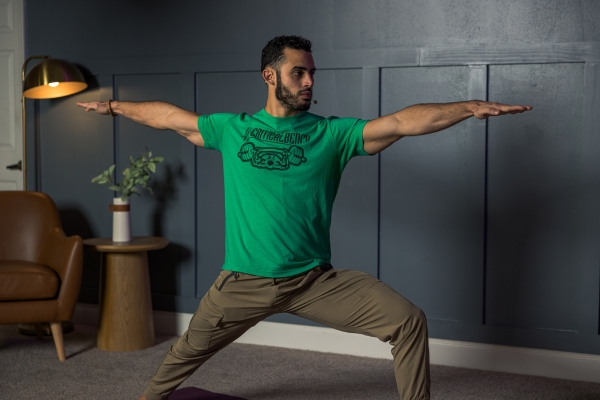
4. Neglecting Certain Muscle Groups
A common mistake in leg sculpting routines is focusing too much on either the quadriceps or the hamstrings, while neglecting other crucial muscles.
This imbalance can lead to muscle weaknesses and increase the risk of injuries.
For example, overly developed quads with underdeveloped hamstrings can result in knee problems, while the opposite can affect hip stability.
Balanced muscle development is essential for overall leg strength, stability, and functionality.
Targeting all the major leg muscles, including the quadriceps, hamstrings, glutes, and calves, ensures:
Improved Performance: Balanced muscles work together more efficiently, enhancing your performance in both workouts and daily activities.
Injury Prevention: Balanced strength reduces the strain on individual muscles and joints, lowering the risk of injuries.
Better Aesthetics: A well-rounded leg workout promotes a more proportionate and visually appealing physique.
Exercises to Ensure All Major Leg Muscles Are Targeted
To achieve balanced muscle development, incorporate a variety of exercises that target all major leg muscles. Here are some effective exercises for each muscle group:
Quadriceps:
Squats: Engage your quads, glutes, and hamstrings.
Leg Press: Focuses primarily on the quads and glutes.
Lunges: Targets quads, glutes, and hamstrings.
Hamstrings:
Deadlifts: Strengthen hamstrings, glutes, and lower back.
Hamstring Curls: Isolate and work the hamstrings.
Good Mornings: Engage the hamstrings and lower back.
Glutes:
Glute Bridges: Focus on glutes and hamstrings.
Hip Thrusts: Target the glutes and improve hip strength.
Step-Ups: Engage glutes, quads, and calves.
Calves:
Calf Raises: Isolate and strengthen the calf muscles.
Seated Calf Raises: Focus on the soleus muscle of the calves.
Box Jumps: Improve calf strength and explosiveness.
By incorporating these exercises into your routine, you can ensure a balanced development of all major leg muscles, leading to stronger, more functional, and aesthetically pleasing legs.
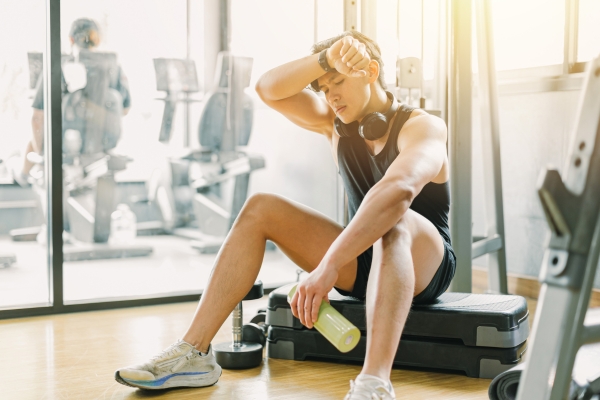
5. Overtraining
Overtraining occurs when you push your body beyond its ability to recover, leading to a decline in performance and potential injuries.
Common signs of overtraining include:
Constant Exhaustion: Continuously feeling tired despite getting sufficient rest.
Decreased Performance: Noticeable drop in strength, endurance, or overall workout performance.
Muscle Soreness: Prolonged muscle soreness that doesn’t improve with rest.
Mood Changes: Increased irritability, anxiety, or depression.
Sleep Disturbances: Difficulty falling asleep or staying asleep.
Recommended Rest and Recovery Practices
To avoid overtraining and promote optimal muscle growth and recovery, it’s essential to incorporate proper rest and recovery practices into your routine:
Scheduled Rest Days: Include at least one to two rest days per week to allow your muscles to recover.
Active Recovery: Engage in low-intensity activities like walking, yoga, or stretching on rest days to promote blood flow and aid recovery.
Adequate Sleep: Aim for 7-9 hours of quality sleep per night to support muscle repair and overall health.
Balanced Nutrition: Consume a diet rich in protein, healthy fats, and carbohydrates to fuel your workouts and recovery.
Hydration: Stay well-hydrated to support muscle function and recovery.
Listen to Your Body: Pay attention to signs of fatigue and adjust your workout intensity and volume accordingly.
Periodization: Plan your workouts in cycles, incorporating periods of higher intensity followed by lower intensity and rest phases.
By recognizing the signs of overtraining and implementing these recovery practices, you can ensure continuous progress in your leg sculpting journey while maintaining your overall health and well-being.
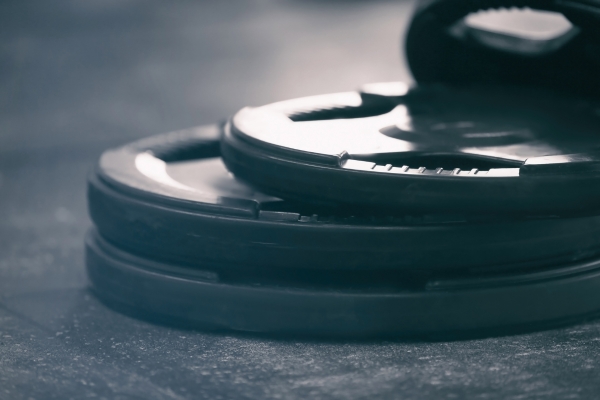
6. Using Improper Weight
One of the most common mistakes in leg sculpting is using improper weight.
Lifting too much weight can compromise your form, leading to a higher risk of injury and ineffective workouts.
On the other hand, lifting too little weight might not challenge your muscles enough to stimulate growth and strength gains.
Both extremes can hinder your progress and prevent you from achieving your leg sculpting goals.
How to Choose the Right Weight for Your Leg Exercises
Choosing the right weight for your leg exercises is essential for maximizing benefits while minimizing injury risk.
Here are some tips to help you determine the appropriate weight:
Start Light: Begin with a manageable weight that allows you to perform each exercise with proper form. It’s better to start light and gradually increase the weight as you become more comfortable with the movements.
Focus on Form: Ensure you can complete all repetitions with correct form. If your form starts to break down, the weight might be too heavy.
Use the RPE Scale: The Rate of Perceived Exertion (RPE) scale helps you gauge how hard you’re working. Aim for a weight that feels challenging but allows you to complete the last few reps with effort, usually around an RPE of 7-8 on a scale of 1-10.
Perform Test Sets: Perform a test set of 8-12 repetitions. If you can easily perform more than 12 reps, increase the weight slightly. If you struggle to reach 8 reps, reduce the weight.
Importance of Progressive Overload
Progressive overload is the gradual increase of stress placed on the muscles during training.
It’s a fundamental principle for muscle growth and strength development.
Here’s why progressive overload is essential:
Stimulates Muscle Growth: Increasing the weight, reps, or intensity of your exercises challenges your muscles, encouraging them to grow and adapt.
Prevents Plateaus: Gradually increasing the workload ensures continuous progress, preventing your muscles from becoming accustomed to a specific routine.
Enhances Strength: Regularly challenging your muscles with heavier weights builds strength, improving overall performance and functional fitness.
To implement progressive overload in your leg sculpting routine:
Increase Weight: Gradually add more weight to your exercises as you become stronger.
Increase Repetitions: Aim to increase the number of reps you can perform with a given weight.
Increase Sets: Add more sets to your workout to increase the overall volume.
Vary Intensity: Incorporate techniques like drop sets, supersets, or tempo changes to challenge your muscles in different ways.
By using the correct weight and incorporating progressive overload, you can ensure continuous progress in your leg sculpting journey, leading to stronger, more defined legs.

7. Not Fueling Your Body Properly
Proper nutrition is the backbone of effective leg sculpting.
Just as you meticulously plan your workouts, paying attention to your diet is crucial for muscle growth and recovery.
Without the right nutrients, your muscles can’t repair and grow, and you won’t see the full benefits of your hard work.
Nutrition provides the energy needed for workouts, supports muscle repair after exercise, and aids in reducing inflammation and muscle soreness.
Common Dietary Mistakes
Many people make dietary mistakes that can hinder their progress:
Insufficient Protein Intake: Protein is essential for muscle repair and growth. Not consuming enough can slow down recovery and muscle development.
Inadequate Calories: Not eating enough calories can lead to energy deficits, making it difficult to sustain intense workouts and build muscle.
Poor Hydration: Dehydration can impair muscle function, reduce workout performance, and increase the risk of injury.
Unbalanced Macronutrients: Relying too heavily on one macronutrient (like carbs or fats) while neglecting others can disrupt the balance needed for optimal muscle function and recovery.
Tips for Proper Nutrition and Hydration
To support your leg sculpting goals, follow these nutrition and hydration tips:
Eat Sufficient Protein: Aim for a protein-rich diet with sources like chicken, fish, legumes, and plant-based proteins. This is crucial for muscle repair and growth.
Balanced Meals: Ensure your diet includes a good balance of protein, healthy fats, and complex carbohydrates. This balance provides sustained energy and supports muscle function.
Stay Hydrated: Drink plenty of water throughout the day. Proper hydration helps maintain muscle function and supports overall health. Remember, hydration is key not only during workouts but also throughout your daily routine.
Post-Workout Nutrition: Consume a meal or snack rich in protein and carbohydrates within 30-60 minutes after your workout. This helps replenish glycogen stores and aids in muscle recovery.
Consider Supplements: If needed, consider supplements like protein powder or BCAAs to ensure you’re meeting your nutritional needs, especially if your diet alone doesn’t cover them.
Monitor Your Intake: Keep track of your food and water intake to ensure you’re getting enough of each. Apps and journals can help you stay on top of your nutritional goals.
By fueling your body with the right nutrients and staying hydrated, you can maximize your leg sculpting efforts and achieve the strong, defined legs you desire.
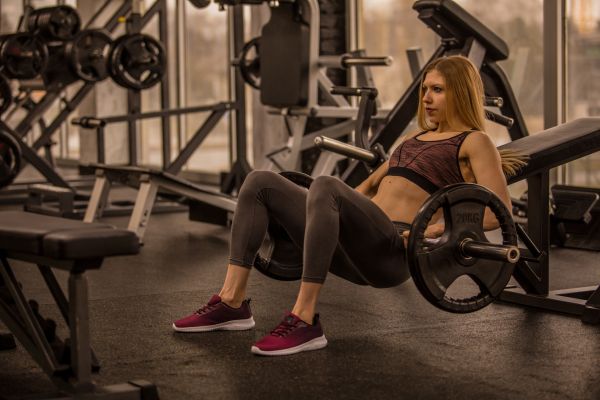
Wrap-Up and Key Points to Remember
Achieving sculpted legs requires more than just effort in the gym—it demands a comprehensive approach that includes proper form, balanced exercises, adequate rest, and proper nutrition.
By avoiding common mistakes and implementing the strategies outlined in this post, you can enhance your workouts, prevent injuries, and see the progress you’re aiming for.
Remember, consistency and mindfulness in your approach to leg sculpting will yield the best results.
Take the time to assess your current routine, make the necessary adjustments, and stay committed to your goals.
Strong, defined legs are within your reach with the right approach and dedication.
Key Points to Remember
- Warm-Up Before Workouts: Always start with dynamic stretches and light cardio to prepare your muscles and reduce the risk of injury.
- Maintain Proper Form: Focus on correct technique to target the right muscles and prevent injuries.
- Balance Muscle Groups: Ensure your workout targets all major leg muscles, including quads, hamstrings, glutes, and calves.
- Avoid Overtraining: Listen to your body, include rest days, and follow proper recovery practices to prevent burnout and injuries.
- Use the Right Exercises: Incorporate a variety of effective leg sculpting exercises, such as squats, lunges, and deadlifts, to ensure comprehensive muscle engagement.
- Choose Proper Weight: Use appropriate weights to challenge your muscles while maintaining good form and aim for progressive overload.
- Proper Nutrition and Hydration: Eat a balanced diet rich in protein, healthy fats, and carbohydrates, and stay well-hydrated to support muscle growth and recovery.
- Cool-Down and Stretching: Always end your workouts with cool-down and stretching exercises to aid in recovery and maintain flexibility.

